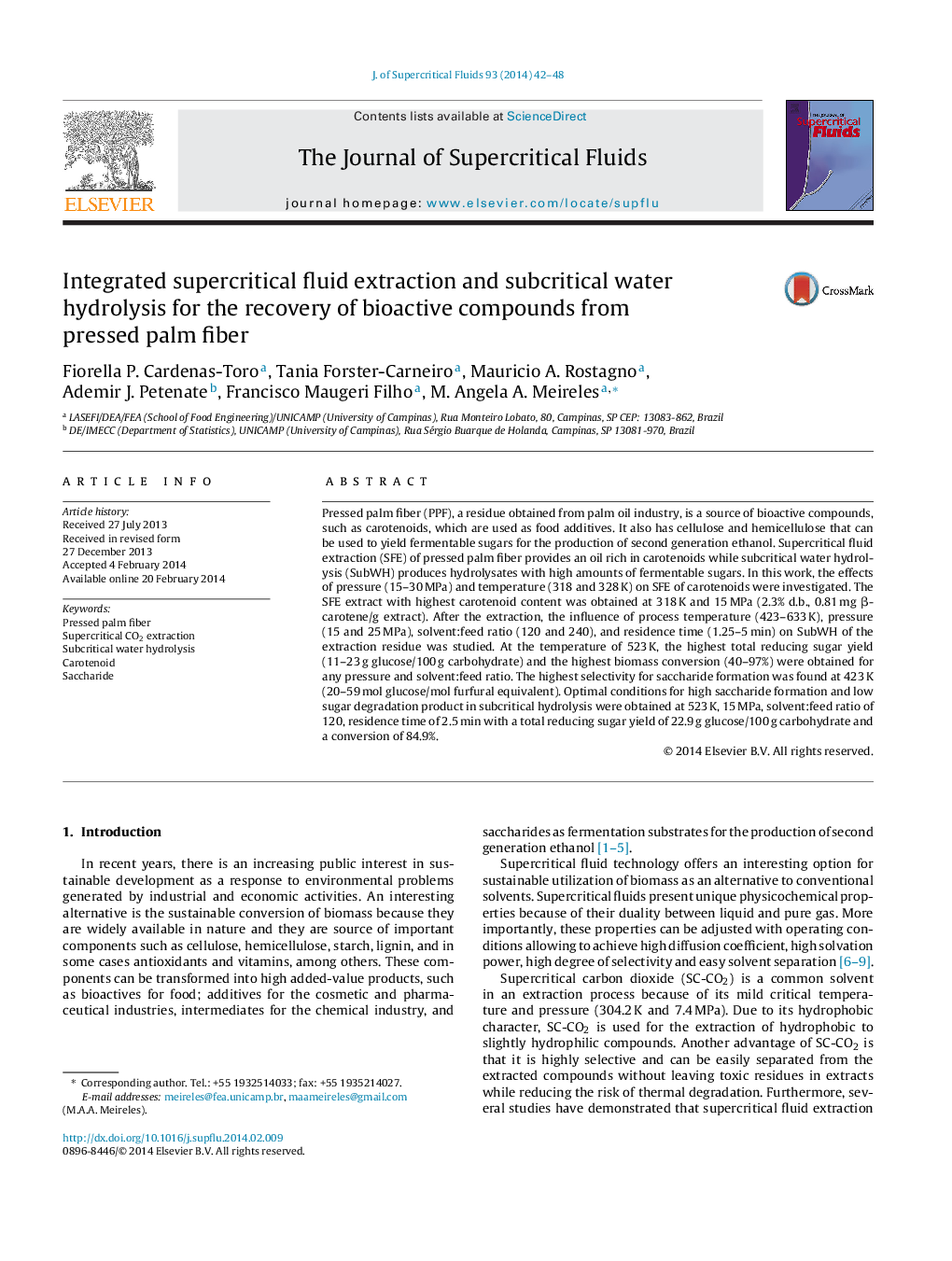| Article ID | Journal | Published Year | Pages | File Type |
|---|---|---|---|---|
| 230421 | The Journal of Supercritical Fluids | 2014 | 7 Pages |
•Supercritical extraction and subcritical hydrolysis of PPF were studied.•An extract rich in carotenoids was obtained after supercritical extraction.•Subcritical hydrolysis was promoted at 523 K and τ of 2.5 min.•Sugar selectivity was promoted by lowest temperature of 423 K.
Pressed palm fiber (PPF), a residue obtained from palm oil industry, is a source of bioactive compounds, such as carotenoids, which are used as food additives. It also has cellulose and hemicellulose that can be used to yield fermentable sugars for the production of second generation ethanol. Supercritical fluid extraction (SFE) of pressed palm fiber provides an oil rich in carotenoids while subcritical water hydrolysis (SubWH) produces hydrolysates with high amounts of fermentable sugars. In this work, the effects of pressure (15–30 MPa) and temperature (318 and 328 K) on SFE of carotenoids were investigated. The SFE extract with highest carotenoid content was obtained at 318 K and 15 MPa (2.3% d.b., 0.81 mg β-carotene/g extract). After the extraction, the influence of process temperature (423–633 K), pressure (15 and 25 MPa), solvent:feed ratio (120 and 240), and residence time (1.25–5 min) on SubWH of the extraction residue was studied. At the temperature of 523 K, the highest total reducing sugar yield (11–23 g glucose/100 g carbohydrate) and the highest biomass conversion (40–97%) were obtained for any pressure and solvent:feed ratio. The highest selectivity for saccharide formation was found at 423 K (20–59 mol glucose/mol furfural equivalent). Optimal conditions for high saccharide formation and low sugar degradation product in subcritical hydrolysis were obtained at 523 K, 15 MPa, solvent:feed ratio of 120, residence time of 2.5 min with a total reducing sugar yield of 22.9 g glucose/100 g carbohydrate and a conversion of 84.9%.
Graphical abstractFigure optionsDownload full-size imageDownload as PowerPoint slide
